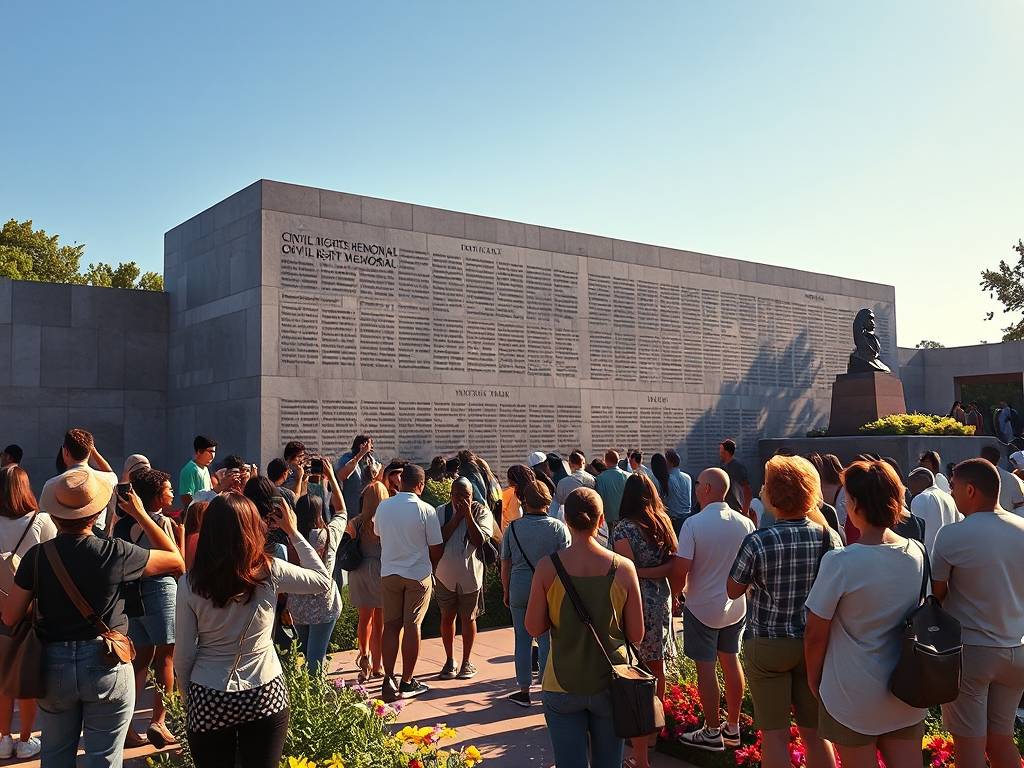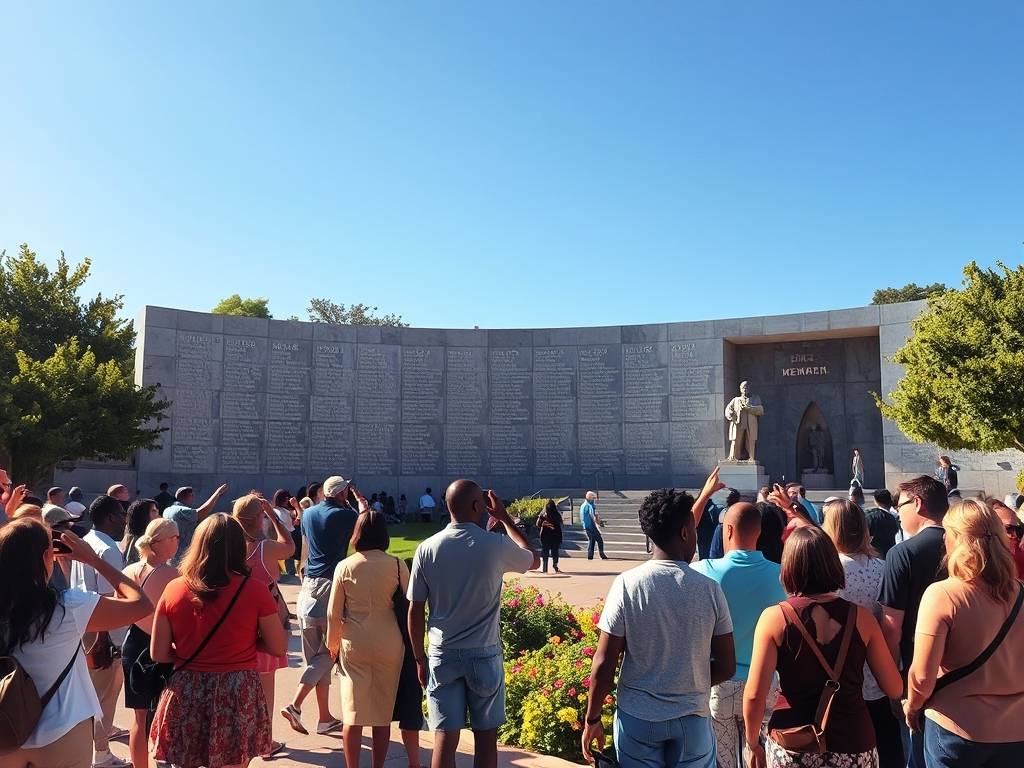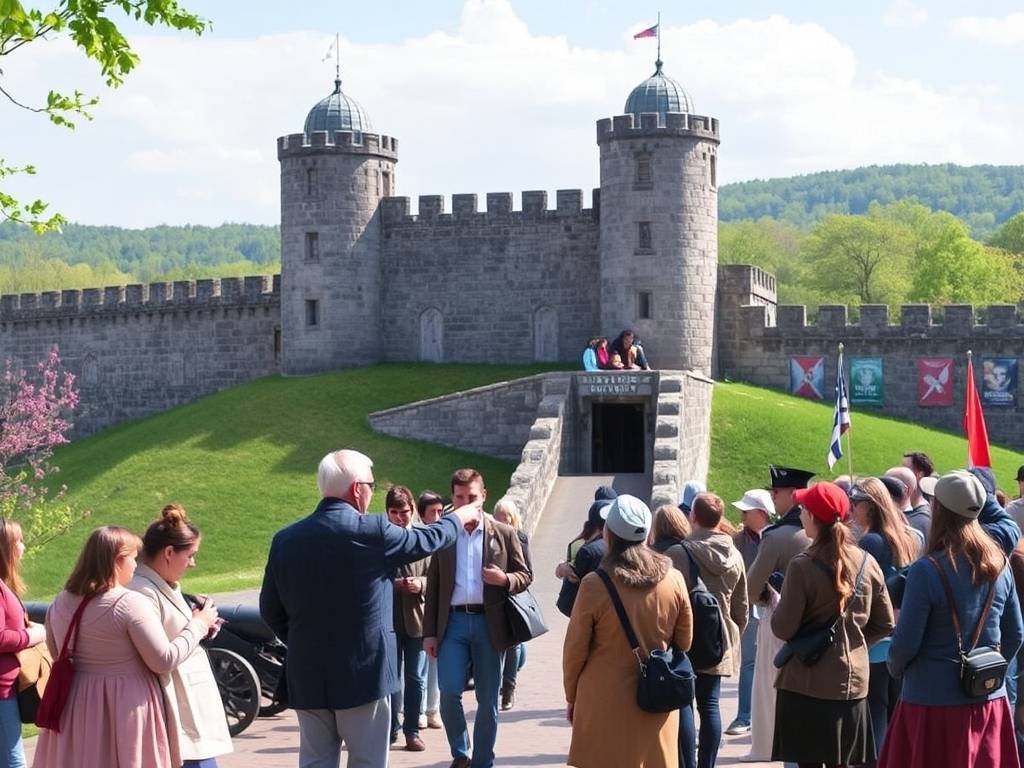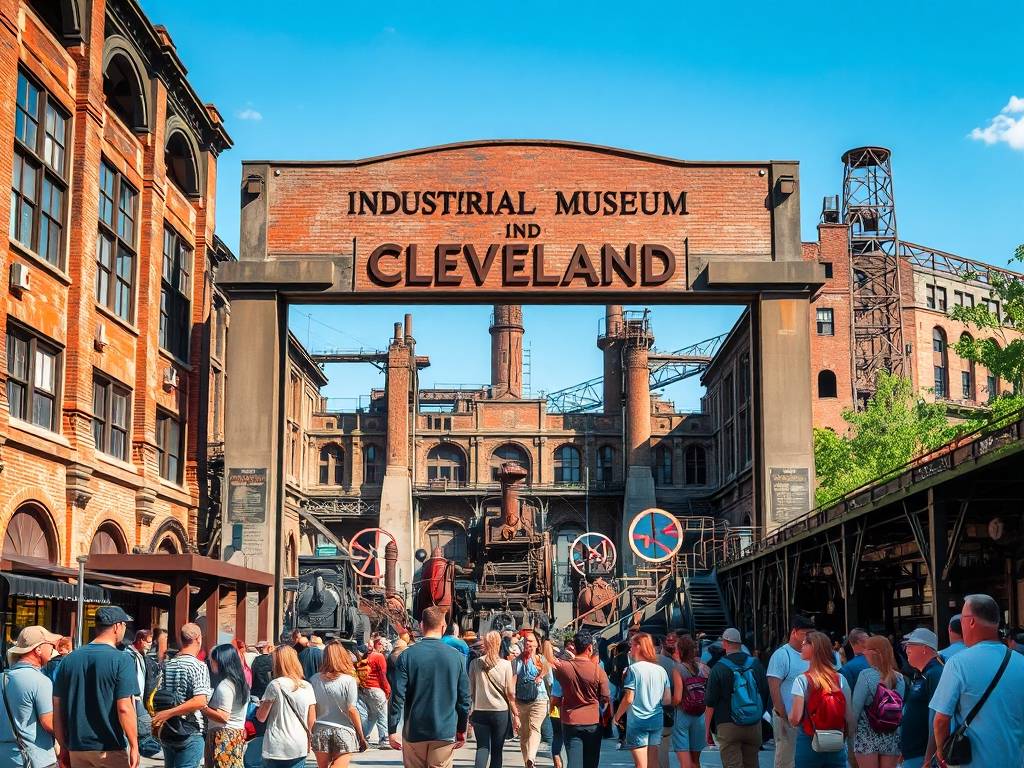USA Travel
US Travel: Civil Rights Memorial Visits in Alabama’s Montgomery
Footsteps to Freedom: A Reflective Journey Through Montgomery's Civil Rights Memorials
There's a certain weight to the air in Montgomery, Alabama. It’s not the humid Southern breeze that you feel on your skin; it's a profound, historical gravity that settles in the soul. This city, often called the "Cradle of the Confederacy," transformed itself into the birthplace of the modern Civil Rights Movement. To travel here is to embark on a pilgrimage, a journey that moves far beyond typical tourism. It is an essential US travel experience for anyone seeking to understand the complex tapestry of American history, the brutal struggle for equality, and the enduring power of the human spirit. A focused trip on Civil Rights Memorial visits in Alabama’s Montgomery is not just a lesson in the past; it's a conversation with the present.

Your journey logically begins in the heart of downtown at the Southern Poverty Law Center's Civil Rights Memorial Center. More than a museum, this space functions as a sacred sanctuary for reflection and education. The centerpiece, designed by the renowned Maya Lin, who also created the Vietnam Veterans Memorial in Washington, D.C., is a simple, powerful black granite table. Water emerges from its center and flows evenly across a surface inscribed with the timeline of the modern Civil Rights Movement, marking key events and the names of 41 individuals who lost their lives between 1954 and 1968. As you run your fingers over the cool, wet stone, you are touching the chronology of courage. The phrase "until justice rolls down like waters and righteousness like a mighty stream" from Dr. Martin Luther King Jr.'s "I Have a Dream" speech is etched behind the table, connecting the spiritual to the historical. This memorial is not passive; it demands engagement. Inside the Center, the "Wall of Tolerance" invites visitors to make a personal pledge to work for justice, a powerful act that transforms remembrance into a commitment to action. This is a foundational stop for any Civil Rights Trail itinerary, setting the emotional and historical stage for everything that follows.

Just a short walk away, history becomes tangible at the Dexter Avenue King Memorial Baptist Church. This unassuming red-brick church at 454 Dexter Avenue is where a 25-year-old Dr. Martin Luther King Jr. began his pastoral ministry and, crucially, his leadership of the Montgomery Bus Boycott. Standing in the pulpit where he preached messages of nonviolent resistance is a humbling experience. The basement contains a stunning mural that chronicles the Civil Rights Movement from slavery to the present day, visually tying the church's specific story to the broader African American experience. The church’s location is symbolically potent—it sits in the shadow of the Alabama State Capitol, where the Confederate flag once flew. This physical proximity is a stark reminder that the fight for civil rights was waged literally on the steps of power. A guided tour of Dexter Avenue Church is highly recommended, as the narratives from the guides, often with personal connections to the era, bring the walls to life with stories of strategy, faith, and community organizing.
No visit to Montgomery is complete without confronting the brutal truth of racial terror. The Legacy Museum: From Enslavement to Mass Incarceration, and the National Memorial for Peace and Justice, both created by the Equal Justice Initiative (EJI), are essential, though emotionally challenging, destinations. These are not merely stops on a tour; they are transformative experiences that reframe American history.
The Legacy Museum is located on a site where enslaved Black people were once warehoused. It uses technology, narrative, and art to draw a direct line from the era of slavery, through the terror of lynching and Jim Crow, to the current crisis of mass incarceration. You will see soil collected from lynching sites and hear first-hand accounts from descendants. It is a sobering, data-driven, and deeply personal indictment of systemic racism.
A short drive away, the National Memorial for Peace and Justice is the nation’s first memorial dedicated to the over 4,400 documented victims of racial terror lynchings between 1877 and 1950. As you walk through the square, you encounter over 800 weathered steel monuments, one for each county where a lynching took place, suspended from the ceiling like haunting bodies. The effect is overwhelming and visceral. As you descend, duplicate monuments lie in a courtyard, waiting to be claimed by their respective counties in an act of acknowledgment and reconciliation. This memorial is a profound place of mourning and a stark reminder of a history too long ignored. Visiting these sites answers the question of what to see for a meaningful Civil Rights tour in Alabama—it is this unflinching look at the truth.
To understand the mechanism of the boycott that made Dr. King a national figure, visit the Rosa Parks Museum, located on the very spot where she was arrested on December 1, 1955. This is not a dry collection of artifacts; it's an engaging, narrative-driven experience. Through time-machine-like exhibits and a restored city bus, the museum immerses you in the context of the Jim Crow South and the momentous decision of one woman to remain seated. It brilliantly details the planning a meaningful Civil Rights tour in Alabama by showcasing the 381-day boycott that followed—a masterclass in community organization, carpools, and unwavering resolve. It shifts the narrative from a single, spontaneous act to a strategic, collective movement.
For a more intimate glimpse into Dr. King's life, the Dexter Parsonage Museum is a must-see. This is the simple white house where Dr. King, his wife Coretta Scott King, and their young children lived from 1954 to 1960. Walking through the rooms, preserved as they were in the 1950s, personalizes the icon. You see his书房, the dining room where strategy was discussed, and the porch where a bomb was planted during the boycott. It’s here that the constant danger and immense personal sacrifice endured by these freedom fighters become heartbreakingly real.
When considering Montgomery Alabama Civil Rights landmarks travel guide logistics, plan to spend at least two full days. The emotional density of these sites requires time for processing. Wear comfortable shoes, as much of the core historic district is walkable. Be prepared for a range of emotions—sadness, anger, inspiration, and hope, often all at once. The best travel tips for visiting Alabama Civil Rights historic sites include booking museum tickets online in advance, especially for the EJI sites, as they often sell out. Allow yourself quiet moments to sit and reflect at each location.
Ultimately, a journey through Montgomery’s Civil Rights Memorials is a journey into the heart of the American story. It’s about walking in the footsteps of giants and bearing witness to both humanity’s capacity for cruelty and its boundless potential for courage and redemption. This trip will challenge you, it will change you, and it will leave you with a deeper, more nuanced understanding of the ongoing pursuit of justice. It is more than a vacation; it is an education in the most profound sense, and an essential chapter in any authentic exploration of US travel.
相关文章
- US Travel: Maritime History Museums in Massachusetts’s Boston
- US Travel: Gold Rush Trail Visits in Alaska’s Skagway
- US Travel: Colonial Church Tours in Virginia’s Jamestown
- US Travel: Industrial Heritage Museums in Ohio’s Cleveland
- US Travel: Historic Fort Tours in New York’s Fort Ticonderoga
- US Travel: Barbecue Tasting Tours in Texas’s Austin
- US Travel: Wine Tasting in California’s Napa Valley
- US Travel: Craft Beer Tours in Oregon’s Portland
- US Travel: Lobster Rolls in Maine’s Portland
- US Travel: Soul Food Dining in Georgia’s Atlanta
发表评论
评论列表
- 这篇文章还没有收到评论,赶紧来抢沙发吧~


